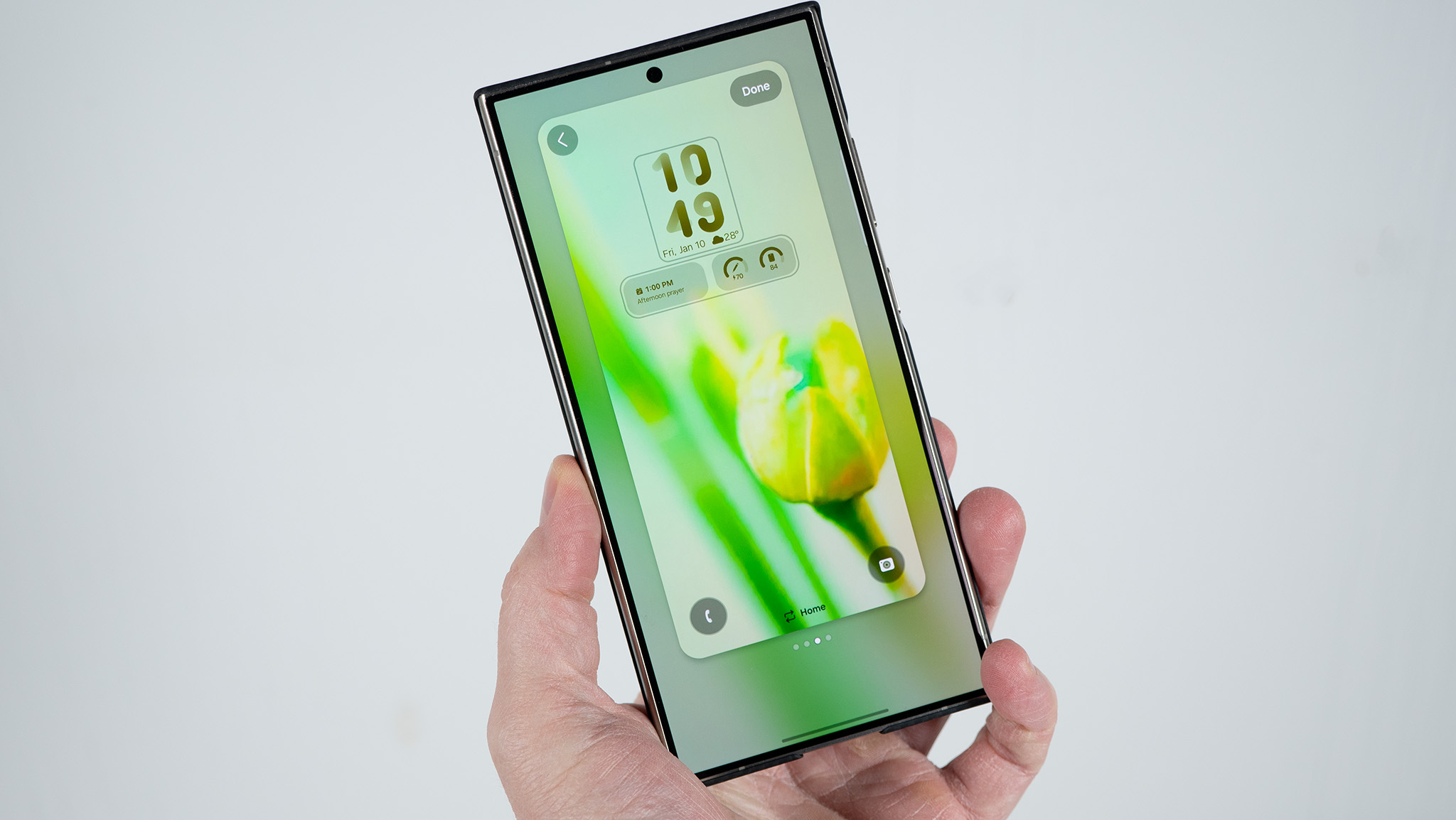Google Pixel 9 Pro Fold vs. Pixel Fold: Should you upgrade?
Two feature-packed foldables that offer the best of Google.
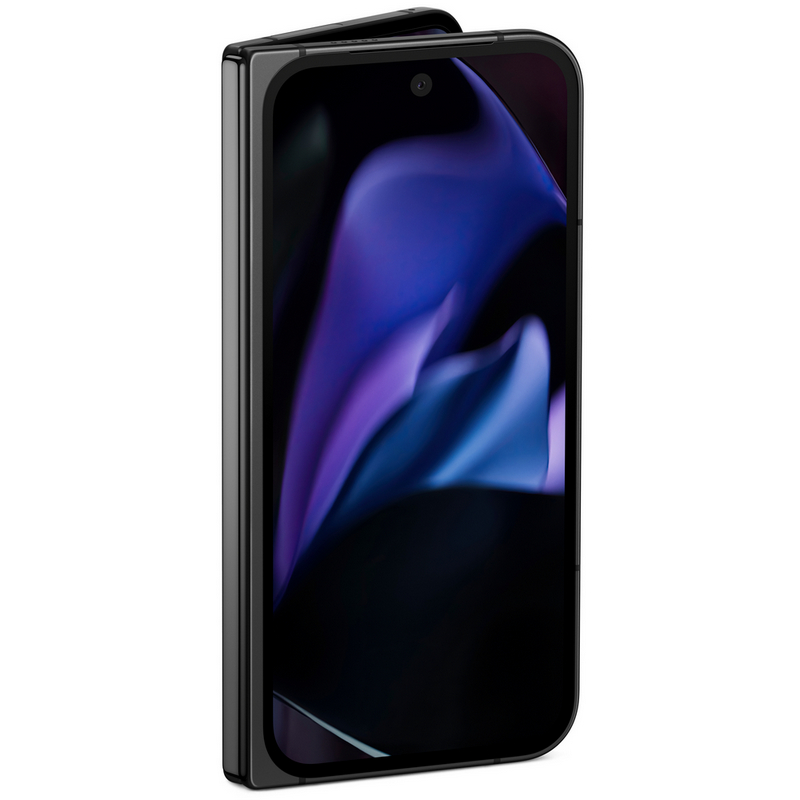
Latest and greatest
The Google Pixel 9 Pro Fold is a futuristic foldable that comes with updated hardware, great cameras, and the newest version of Android with a wide variety of AI-powered features.
For
- Slimmer bezels around inner display
- Faster 45W wired charging
- Seven years of OS & security updates
Against
- Expensive
- Some premium AI features are paid

Still has it all
The Google Pixel Fold continues to be a fantastic foldable that comes with a unique form factor, dependable hardware, and thoughtful software additions for hassle-free multitasking.
For
- Unique form factor for easier one-handed use
- Multitasking works great
- Top-of-the-line camera quality
Against
- Dated hardware and slow charging
- Not much in terms of OS updates
Following months of leaks and teasers, the Pixel 9 series is finally official. For the first time ever, Google's smartphone lineup is comprised of four all-new devices, including the Pixel 9 Pro Fold. It's the company's second foldable, succeeding the Pixel Fold.
Starting at $1799, the latest Pixel 9 Pro Fold is a top-tier device that comes with powerhouse hardware, AI-enhanced software, and a plethora of other goodies. That's all well and good, but just how big of an upgrade it is over the previous-gen Pixel Fold?
Let's take a comparative look at the Google Pixel 9 Pro Fold vs. Pixel Fold and find out how these foldables stack up against each other.
Google Pixel 9 Pro Fold vs. Pixel Fold: Design, displays, and build quality
Having a completely refreshed design, the Pixel 9 Pro Fold looks (and feels) entirely different from its predecessor. While the Pixel Fold has a curved and polished frame, the newest model features flat sides with a satin finish. Not just that, but the front and the back are now fully flat glass surfaces as well. The reworked hinge is a huge improvement over what you'd find on the Pixel Fold, as it allows the Pixel 9 Pro Fold to lay fully flat when it's unfolded.
The matte-finished back panel of the Pixel 9 Pro Fold is a welcome change over the glossy rear of the last-gen model. It's home to the foldable's triple-lens primary camera system, housed in a rectangular module — complete with rounded corners — placed on the top left corner. The lenses themselves sit in two pill-shaped cutouts that are stacked horizontally, with the LED flash and a microphone situated on their right. This design change helps give the Pixel 9 Pro Fold a unique visual identity, although there's no denying that Google's signature 'camera bar' design — found on the Pixel Fold — will always remain iconic.



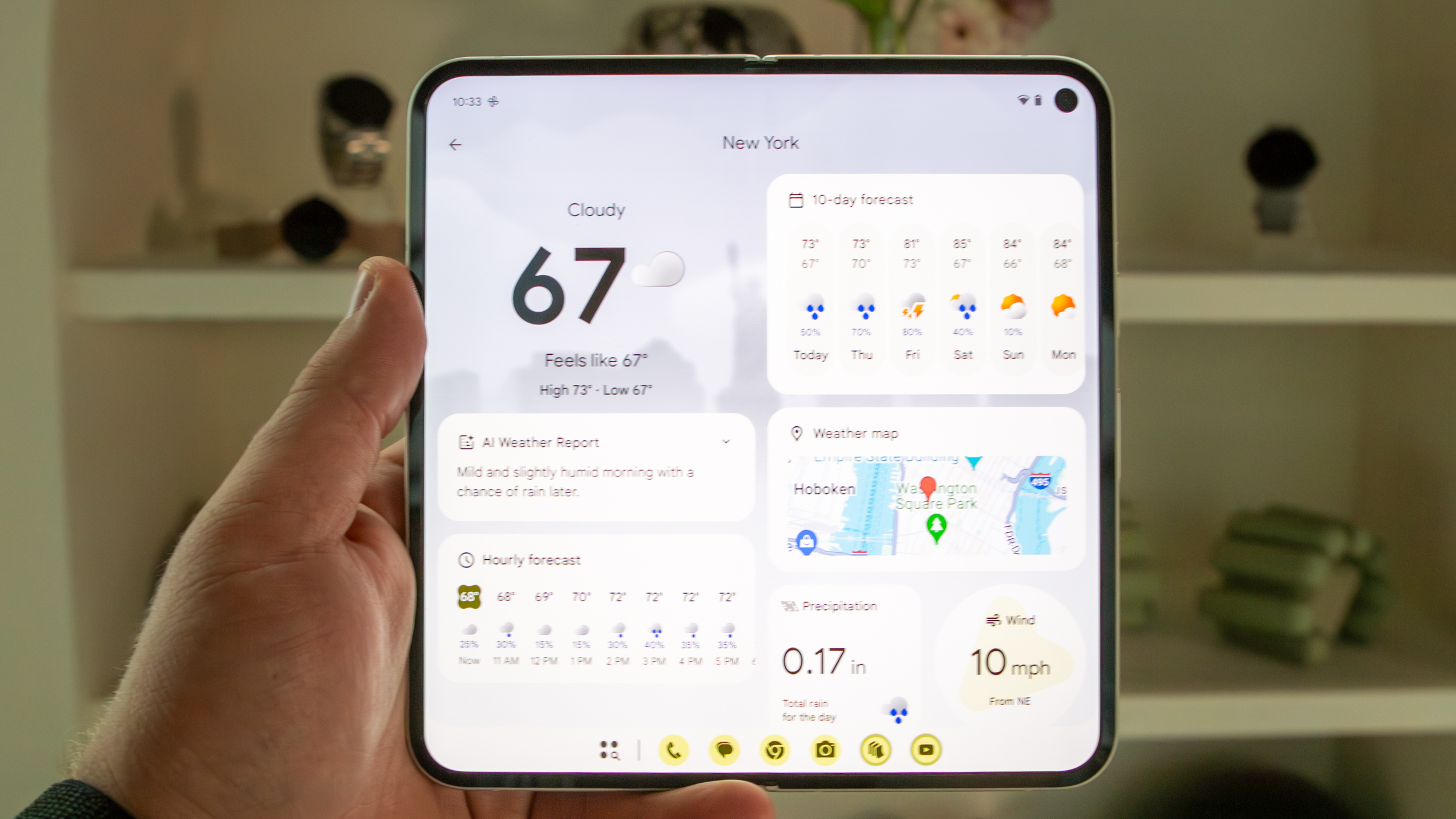
The Pixel 9 Pro Fold sports a 6.3-inch 'Actua' display that's much bigger than the 5.8-inch display of the Pixel Fold. Although both are incredible OLED panels having all the usual characteristics (e.g., 120Hz variable refresh rate, HDR support), what's interesting is the aspect ratio. The Pixel 9 Pro Fold comes with a 20:9 screen, which is a bit taller than the 17.4:9 screen of the Pixel Fold. And of course, it's not change for change's sake. The taller display — which is exactly the same as the one you'd find on the Pixel 9 and the Pixel 9 Pro — allows for an enhanced app experience.
Open up the Pixel 9 Pro Fold, and you'll immediately notice that the inner screen has changed as well. The 8.0-inch 'Super Actua Flex' display is a bit bigger than the 7.6-inch display of the Pixel Fold. Both are stunning folding OLED panels, but again, it's the aspect ratio that's particularly worth talking about. Compared to the 1.2:1 screen of the Pixel Fold, the Pixel 9 Pro Fold has a practically square 1.03:1 screen that should not only help minimize app compatibility issues, but also make multitasking a much better affair.


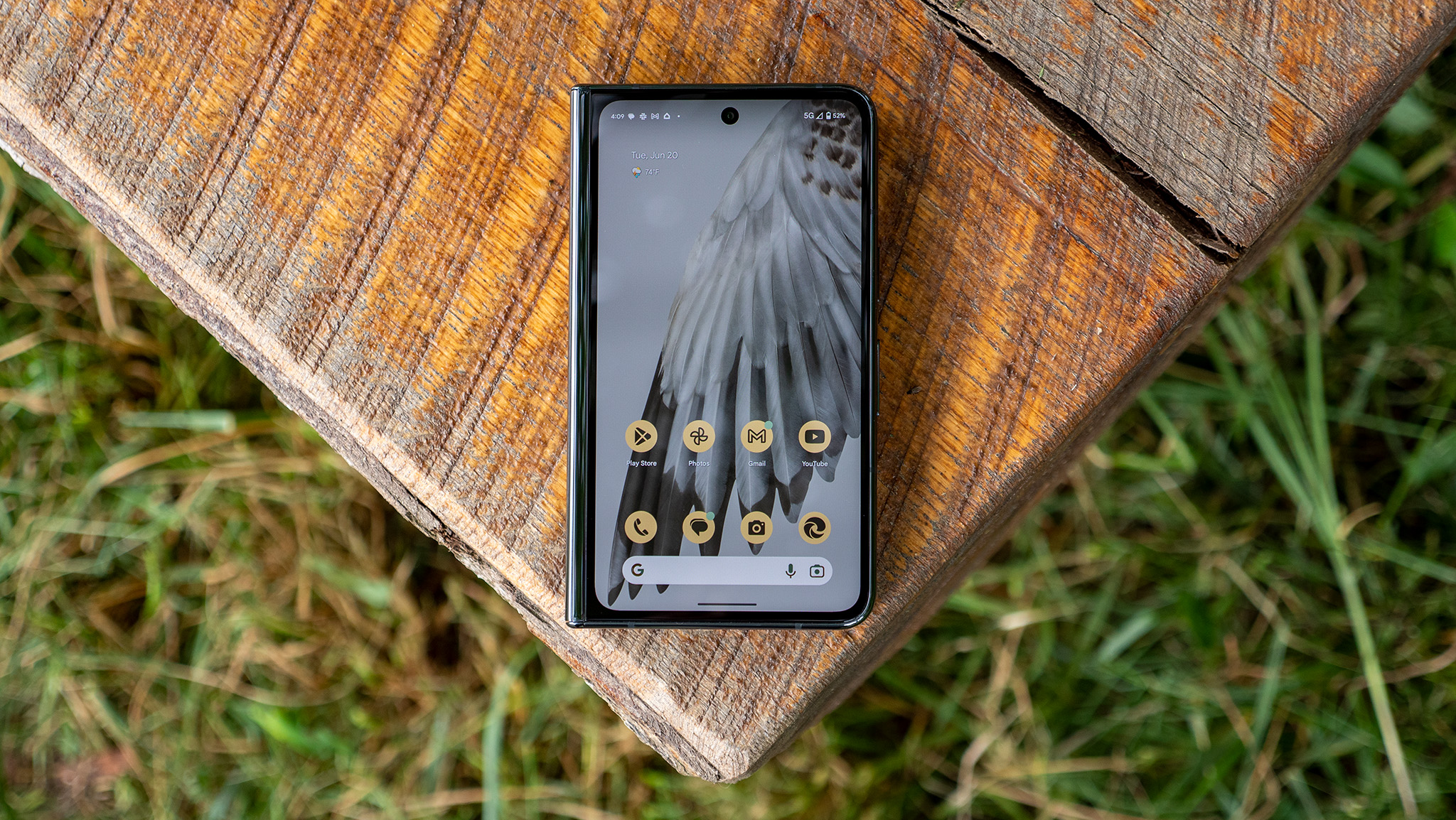
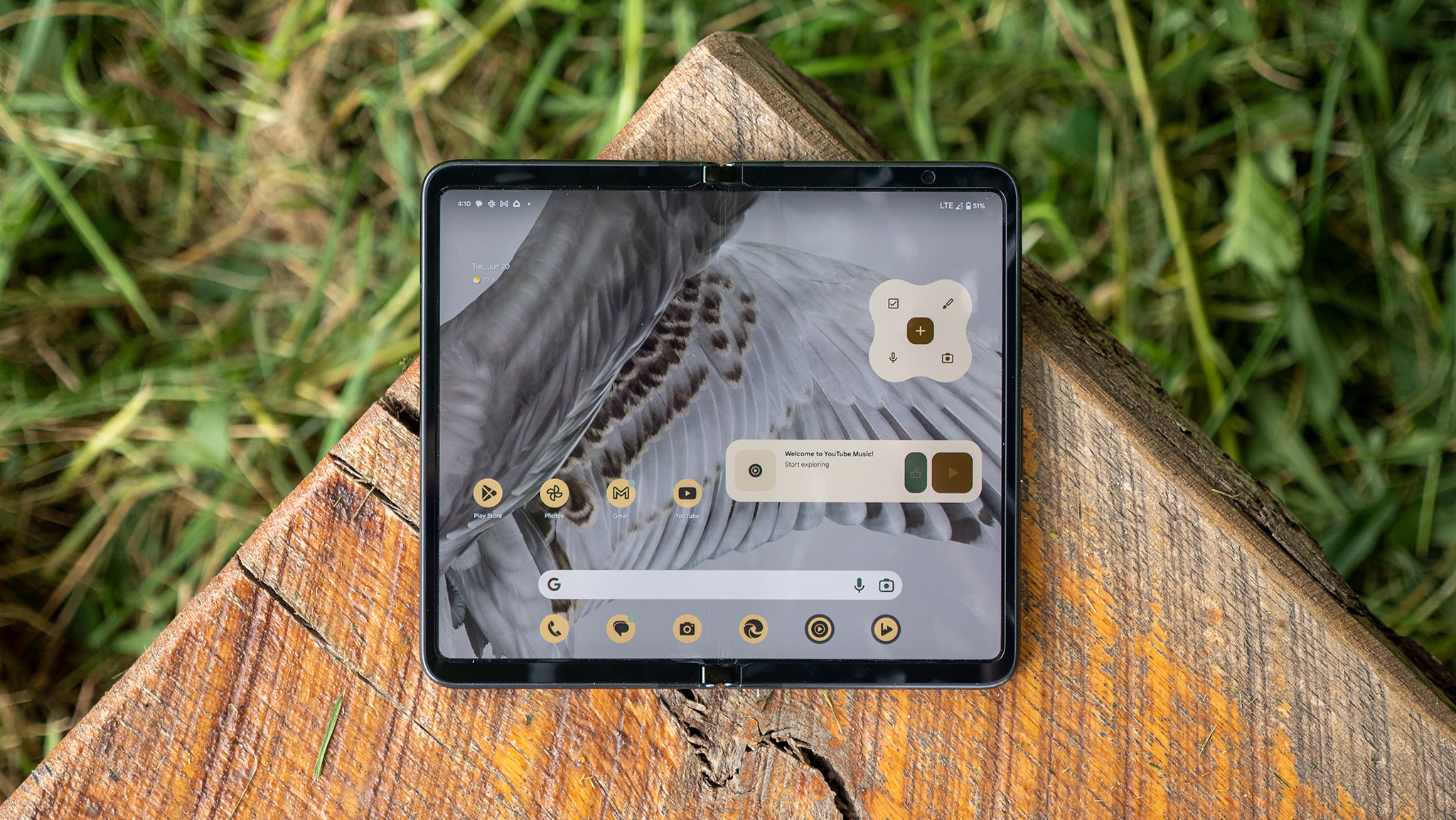
Apart from that, you get all the usual improvements (e.g., increased peak brightness, LTPO support for the inner screen) as well. Both smartphones are quite durable and come backed by an IPX8 rating. However, the Pixel 9 Pro Fold is 26g lighter than the Pixel Fold, despite having a larger physical footprint. It's also the thinnest foldable you can get in the United States, measuring just 5.1mm when unfolded.
Google Pixel 9 Pro Fold vs. Pixel Fold: Hardware and cameras
| Header Cell - Column 0 | Google Pixel 9 Pro Fold | Google Pixel Fold |
|---|---|---|
| Dimensions | Closed: 155.2 x 77.1 x 10.5mm, Opened: 155.2 x 150.2 x 5.1mm | Closed: 139.7 x 79.5 x 12.1mm, Opened: 139.7 x 158.7 x 5.8mm |
| Durability & Case Material(s) | Multi-alloy steel (Hinge), Corning Gorilla Glass Victus 2 (Cover display & Back panel), IPX8 certification | Multi-alloy steel (Hinge), Corning Gorilla Glass Victus (Cover display & Back panel), IPX8 certification |
| Weight | 257g | 283g |
| Display (Outer) | 6.3-inch OLED, 1080x2424 pixels resolution, 120Hz refresh rate, 2700 nits peak brightness | 5.8-inch OLED, 1080x2092 pixels resolution, 120Hz refresh rate, 1550 nits peak brightness |
| Display (Inner) | 8.0-inch LTPO OLED, 2076x2152 pixels resolution, 120Hz refresh rate, 2700 nits peak brightness | 7.6-inch OLED, 2208x1840 pixels resolution, 120Hz refresh rate, 1450 nits peak brightness |
| Chipset / SoC | Google Tensor G4, Titan M2 security coprocessor | Google Tensor G2, Titan M2 security coprocessor |
| RAM & Storage | 16GB & 256GB/512GB | 12GB & 256GB/512GB |
| Sensors | Proximity, Ambient light, Accelerometer, Gyrometer, Magnetometer, Barometer, and Hall effect | Proximity, Ambient light, Accelerometer, Gyrometer, Magnetometer, Barometer, and Hall effect |
| Connectivity | Wi-Fi 7, Bluetooth 5.3, Dual-SIM 5G (mmWave & Sub-6), NFC, GPS, Ultra-Wideband chip for ranging and spatial orientation, and USB-C 3.2 | Wi-Fi 6e, Bluetooth 5.2, Dual-SIM 5G (mmWave & Sub-6), NFC, GPS, Ultra-Wideband chip for ranging and spatial orientation, and USB-C 3.2 |
| Other Features | Stereo speakers, 3 Microphones | Stereo speakers, 3 Microphones |
| Battery & Charging | 4650mAh (Typical), 45W wired charging, Qi wireless charging | 4821mAh (Typical), 30W wired charging, Qi wireless charging |
| Cameras (Rear) | 48MP wide-angle, 10.5MP ultrawide, and 10.8MP telephoto (5x optical zoom) | 48MP wide-angle, 10.8MP ultrawide, and 10.8MP telephoto (5x optical zoom) |
| Cameras (Outer & Inner) | 10MP & 10MP | 9.5MP & 8MP |
| OS & Update Policy | Android 14 (preloaded), 7 years of updates | Android 13 (preloaded), 5 years of updates |
| Color Options | Obsidian, Porcelain | Obsidian, Porcelain |
Google's latest foldable flagship brings quite a few upgrades when it comes to core hardware. Just like its three slab-styled siblings, the Pixel 9 Pro Fold is driven by the brand-new Tensor G4 SoC and comes with 16GB of RAM. In comparison, the Pixel Fold is powered by the now two-year old Tensor G2 chipset and comes with 12GB of RAM. Storage options remain unchanged, however, which means you have 256GB or 512GB to choose from.
Obviously, spec sheets aren't everything and we haven't had the chance to put the device through its paces yet. However, considering that Android Central's Nicholas Sutrich found the Pixel Fold to be an admirable everyday performer in his review, we're fairly certain the Pixel 9 Pro Fold won't disappoint us either.
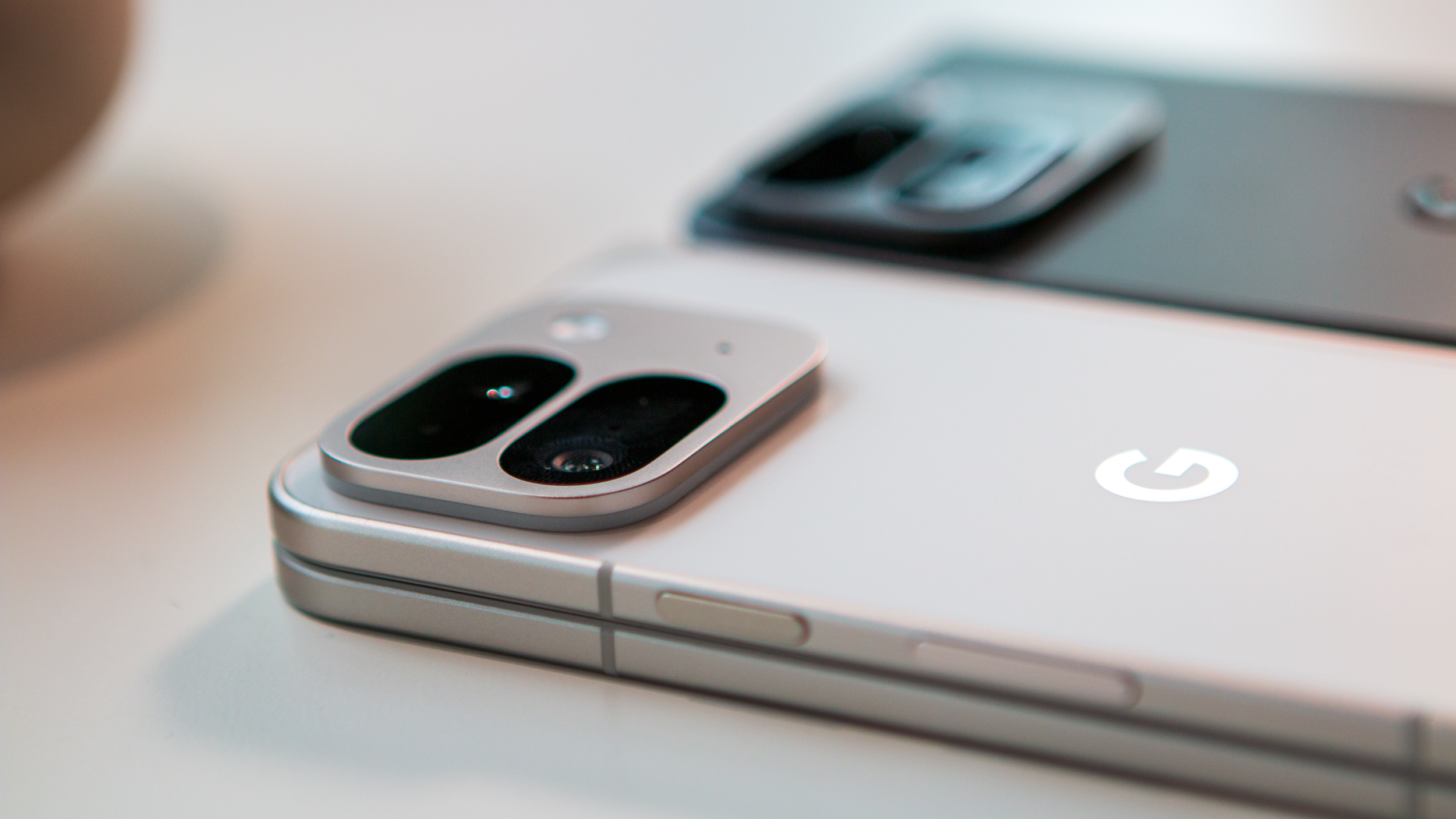
The Pixel 9 Pro Fold features a triple-lens primary camera system that, at least on paper, looks almost identical to that on the Pixel Fold. The primary sensor is still a 48MP unit with a 1/2-inch sensor size, and it's complemented by a 10.5MP ultrawide module and a 10.8MP telephoto lens with 5x optical zoom. The ultrawide sensor has a slightly lower resolution this time around, but the telephoto unit is the same. Also, the field of view has increased for both.
You get two additional cameras as well — one on the outside and one on the inside — with both having slightly improved resolution and better field of view.

However, we all know that when it comes to Pixels, it's Google's image processing that makes the real magic happen. As such, we're sure that the Pixel 9 Pro Fold will end up among the best Android camera phones (regardless of the form factor) out there, just like the Pixel Fold.
Google Pixel 9 Pro Fold vs. Pixel Fold: Software and AI
A minimal yet feature-laden software experience has always been the hallmark of Pixel smartphones, even more so when we're talking about a foldable. For its newest folding flagship, it seems Google has taken the already fantastic software of the previous-gen model and supercharged it.
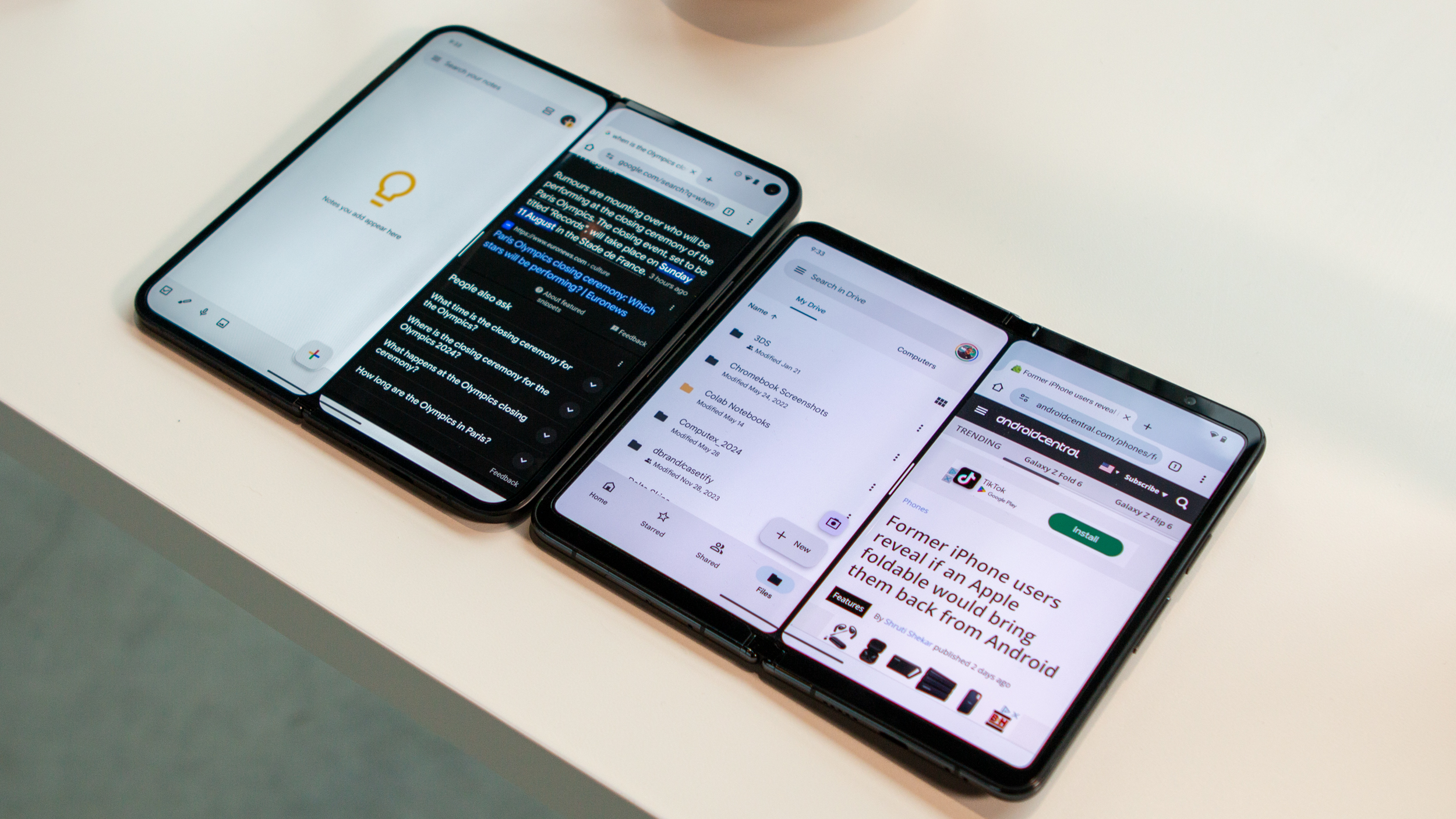
As noted by Android Central's Andrew Myrick during his hands-on, the Pixel 9 Pro Fold is a delight when it comes to multitasking. The reworked aspect ratio of the inner display allows two 'regular-sized' apps to run in split-screen mode. You can pin the taskbar at the bottom, quickly launch multiple pairs of your frequently used apps side-by-side, and even have a third app running in a floating window.
Google AI is now a much more integral part of the device's overall user experience than it has ever been. You get a bunch of new apps (e.g., Pixel Screenshots, Pixel Studio) that leverage AI to enhance your workflow. Then there's Gemini, Google's built-in AI chatbot and Large Language Model (LLM) that can help you write stories from prompts, provide contextual information based on what's on your device's screen, and more.
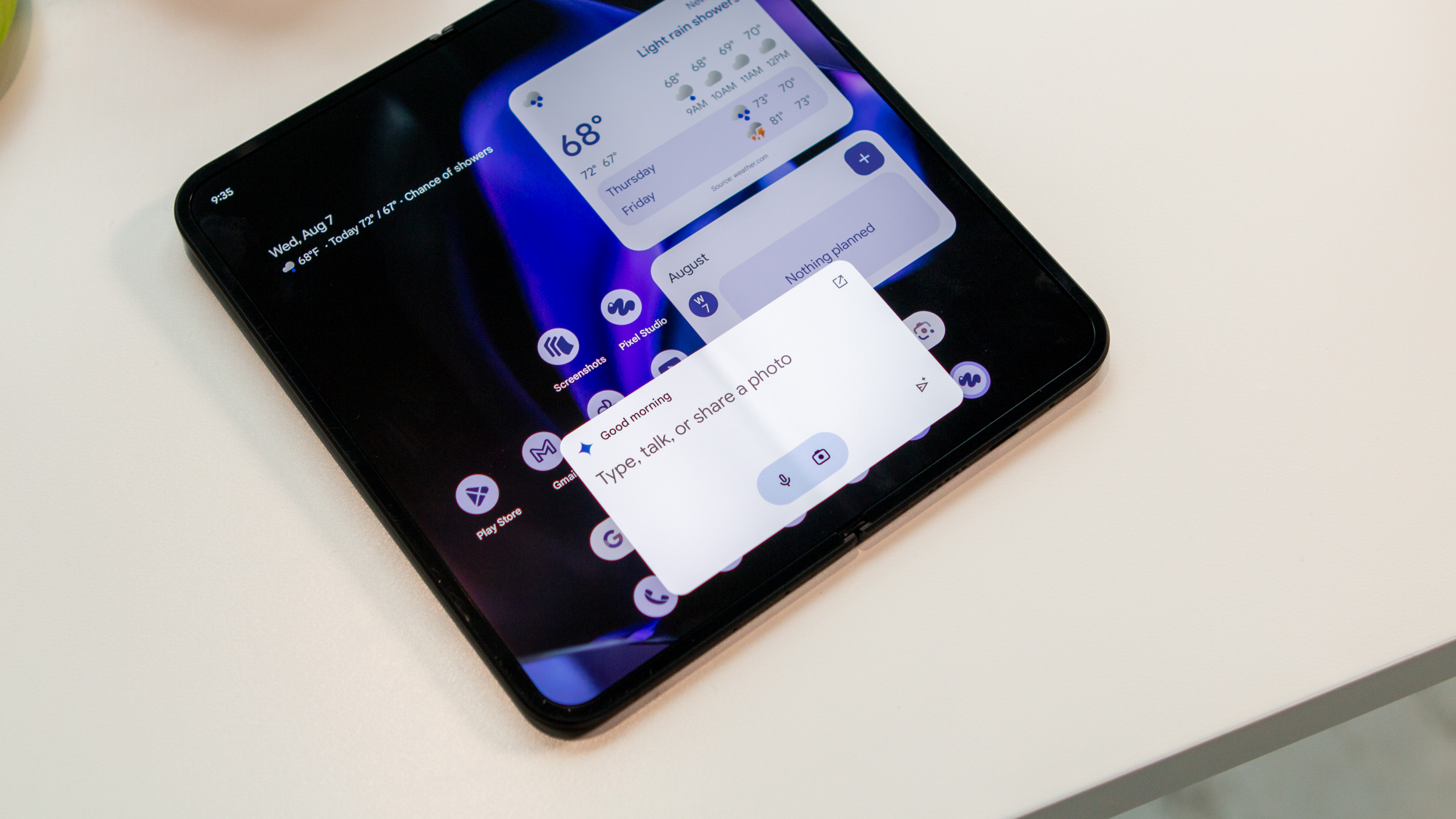
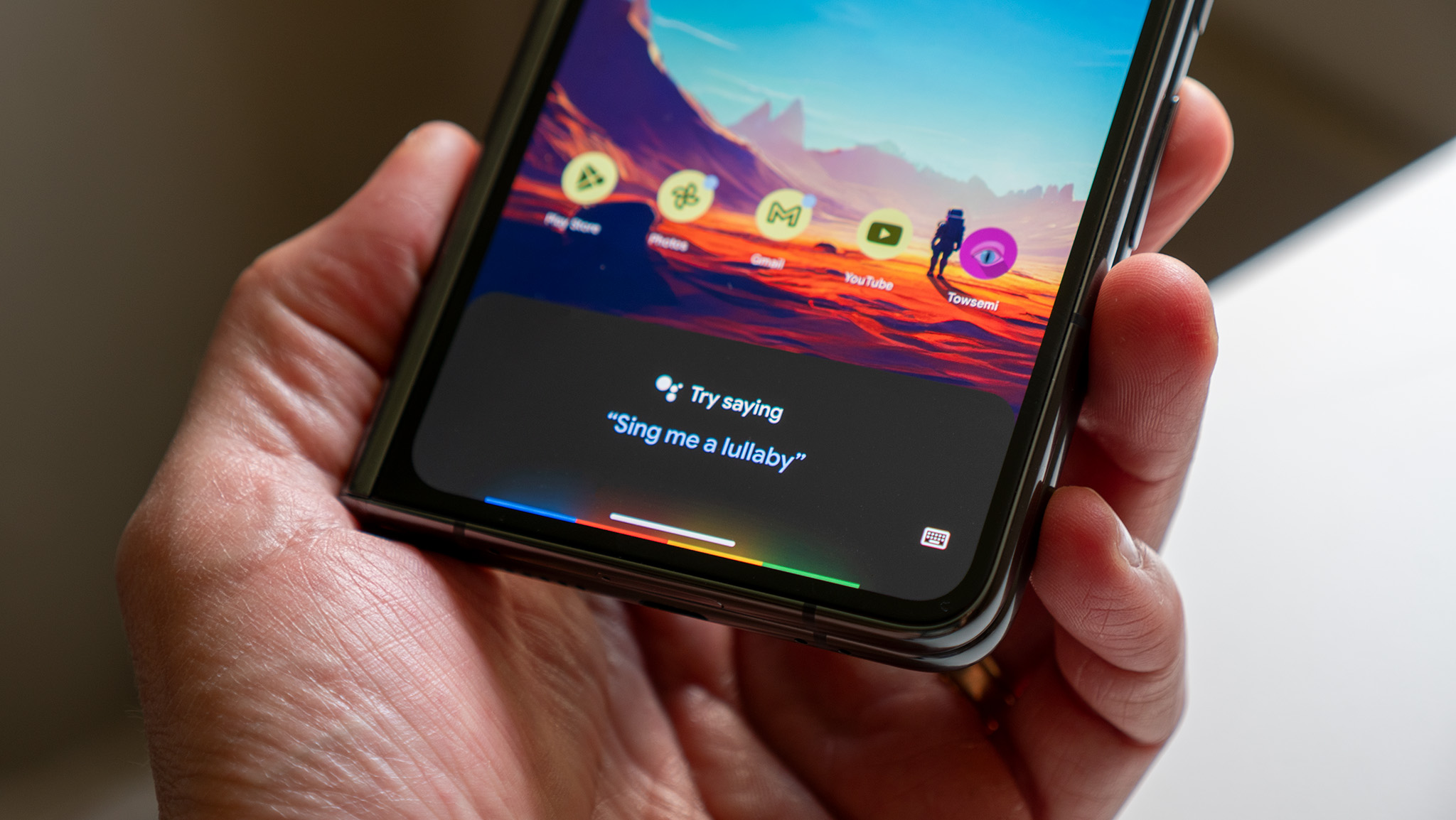
Running Android 14 out of the box, the Pixel 9 Pro Fold is eligible for seven years of OS and security updates. Conversely, the Pixel Fold launched with Android 13 and is eligible for five years of updates.
Google Pixel 9 Pro Fold vs. Pixel Fold: Should you upgrade?
The latest Pixel 9 Pro Fold offers just about everything one could possibly want from a modern foldable. You get a truckload of AI-powered software features, fantastic cameras, and two gorgeous displays that work equally well for multitasking and multimedia, all in a redesigned chassis that looks and feels every bit as premium as its price suggests.
On the other hand, the last-gen Pixel Fold still remains an extremely well-rounded foldable. It has a unique form factor, top-of-the-line cameras, and software features that continue to be unmatched. Moreover, since it's no longer the newest thing in town, buying one at a lower price shouldn't be that hard.

Undoubtedly, these are two of the best foldable phones (at least in the high-end segment) you can get in the market right now. If you're planning to buy your first folding flagship, you should simply pick the one that better fits your budget.
However, if you already have the Pixel Fold, we recommend upgrading to the Pixel 9 Pro Fold only if you can get a great trade-in discount. Sure, the newer displays and fancy AI features are great, but they don't really seem worth shelling out $1,799 for, especially when you can save $400 get the awesome OnePlus Open instead!

Fabulously fresh
The Pixel 9 Pro Fold comes with a fresh design and updated displays for easier multitasking. It runs the newest version of Android, and you get several AI-powered features too.

Classically cool
The Pixel Fold features a classic design that continues to stand out from the competition. Both its displays are a delight to use, and you get some truly amazing cameras as well.
Be an expert in 5 minutes
Get the latest news from Android Central, your trusted companion in the world of Android

When Rajat got his first Personal Computer—a Pentium III machine with 128MB of RAM and a 56kbps dial-up modem—back in 2001, he had little idea it would mark the beginning of a lifelong love affair with gadgets. That fascination, combined with a penchant for writing and editing, ultimately led to him becoming a technology journalist. Some of his other interests include Photography, Hand Lettering, and Digital Typography. Rajat is also somewhat obsessed with wrist-worn timepieces and appreciates a Casio just as much as a Jaeger-LeCoultre.
You must confirm your public display name before commenting
Please logout and then login again, you will then be prompted to enter your display name.
